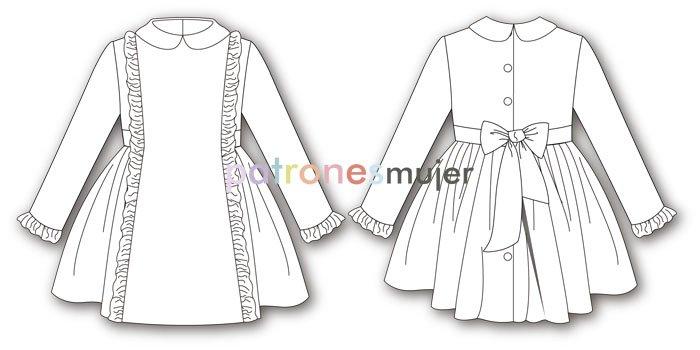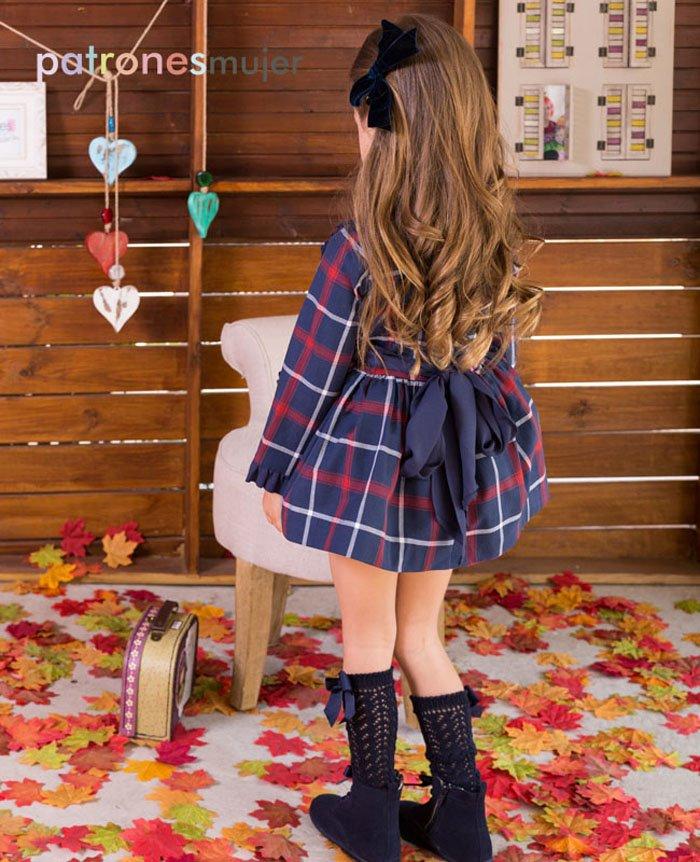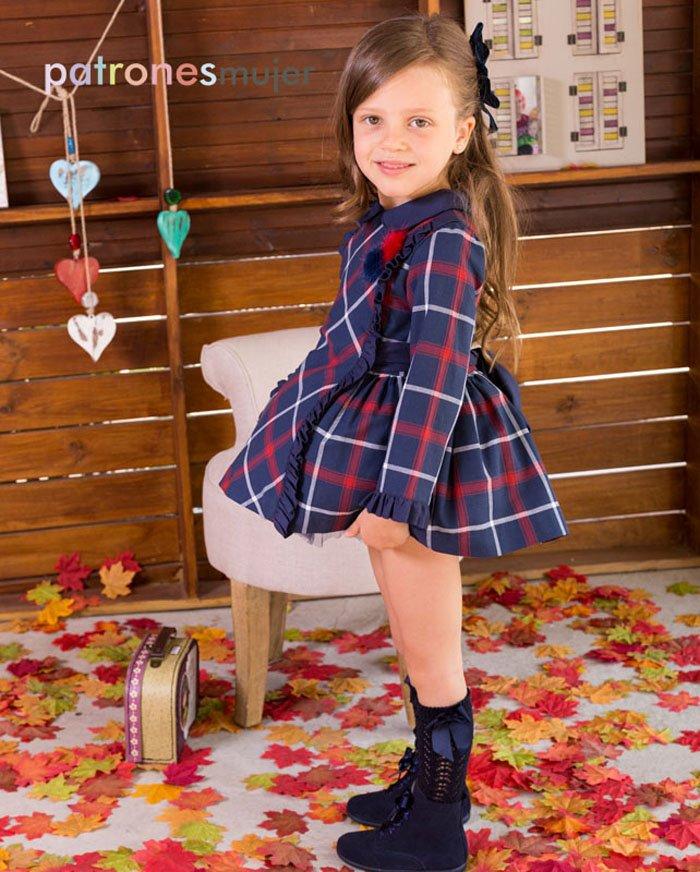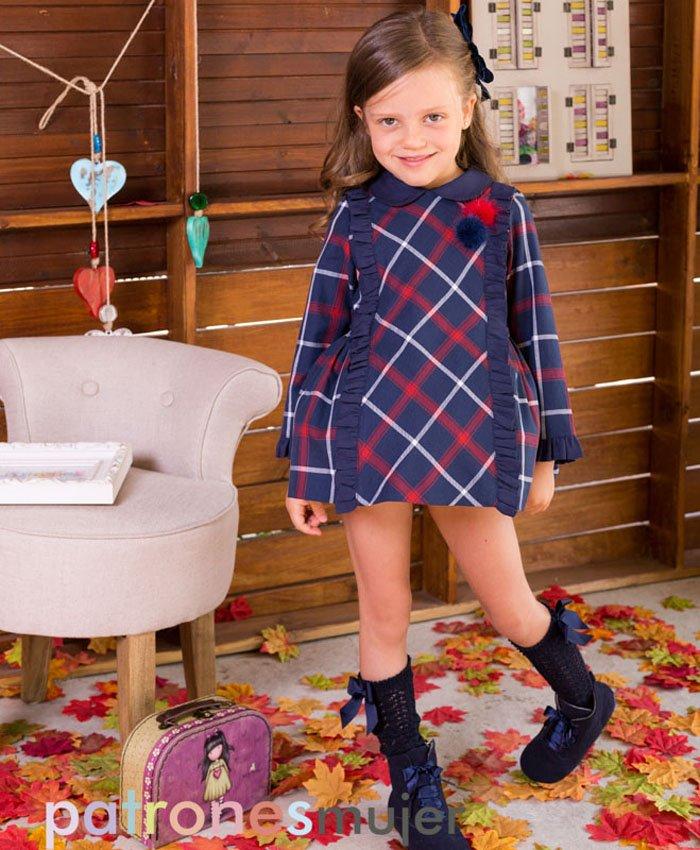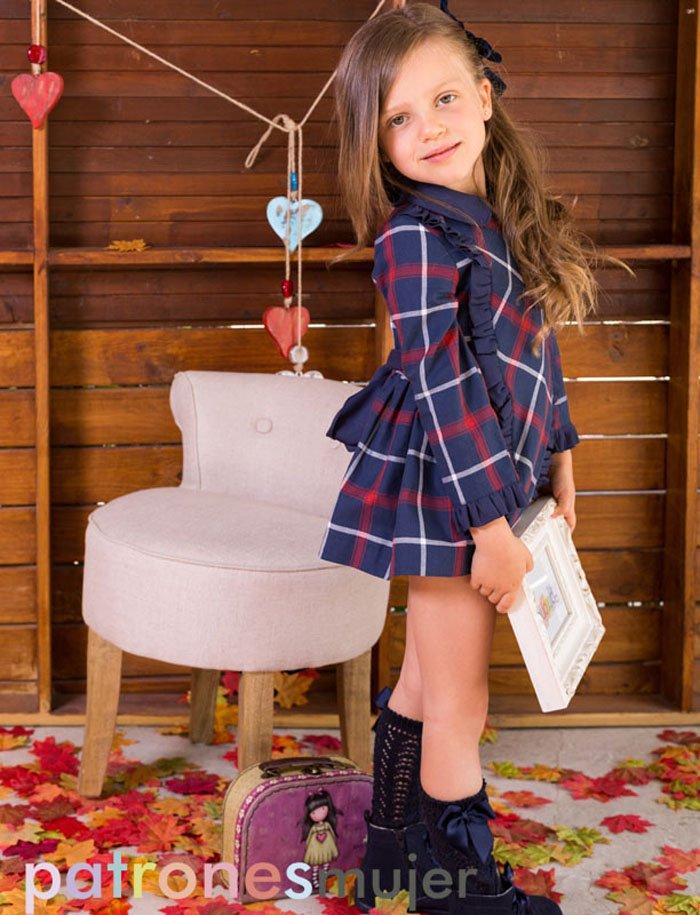– Los tejidos recomendados para hacer el vestido son: Viyela,algodón,sarga y lana fina. El forro es popelín.
– Si el vestido lo hacemos en tejido liso, la pieza 1 que va al bies la cortamos al hilo.
– Está en las tallas de 1 año a 7 años.
– Dificultad: Media
TIPS
– The recommended fabrics to make the overalls are: Viyella, cotton, twill and fine wool. The lining is poplin.
– If you use a non-patterned fabric, don´t cut piece number 1 on the bias but on the grain.
– Available in sizes 1 to 7 years.
– Difficulty: Medium
VIDEO TUTORIAL
MATERIALES/MATERIALS
Género cuadros/main checkered fabric:
1,25 m para talla 1-2 años/1,25 m for size 1-2 years
1,45 m para tallas 3-4 años/1,45 m for size 3-4 years
1,60 m para tallas 5-6 años/1,60 m for sizes 5-6 years
1,75 m para talla 7 años/1,75 m for size 7 years
Género liso/Non-patterned fabric:
90 cm para talla 1-2 años/90 cm for size 1-2 years
1,05 m para tallas 3-4 años/1,05 m for size 3-4 years
1,20 m para tallas 5-6 años/1,20 m for sizes 5-6 years
1,30 m para talla 7 años/1,30 m for size 7 years
Entretela/Fusible interfacing: 25 cm
Cremallera invisible/Invisible zipper: 30 cm
Cinta de terciopelo/Velvet ribbon: 2 m
Botones blusa/Blouse buttons: 7
Botones pichi/Overalls buttons: 6
Hilo/thread,tijeras/scissors y alfileres/pins.
PATRÓN:
INSTRUCCIONES DE CORTE:
– La pieza 1 es el delantero, cortar 1 vez de género cuadros y 1 de forro (el patrón está a la mitad). Para sacar el forro cortar por la línea del bajo.
– La pieza 2 es el costadillo delantero, cortar 2 veces de género cuadros y 2 de forro (encarados).
– La pieza 3 es la espalda, cortar 2 veces de género cuadros y 2 de forro (encarados).
– La pieza 4 es la manga, cortar 2 veces de género cuadros (encarados).
– La pieza 5 es la falda, cortar 2 veces de género cuadros y 2 de forro (encarados). Para sacar el forro cortar por la línea del bajo.
– La pieza 6 es el cuello, cortar 4 veces de género liso y 2 de entretela (encarados).
– La pieza 7 es el bies del escote, cortar 1 vez de género liso.
– La pieza 8 es el volante de la manga, cortar 2 veces de género liso.
– La pieza 9 es el volante del delantero, cortar 2 veces de género liso (el patrón está a la mitad).
– La pieza 10 es el lazo, cortar 2 veces de género liso.
– La pieza 11 es el afinado del cuello, cortar en papel o cartón.
– Para la entretela de la vista espalda, cortar dos tiras de 4 cm de ancho por el largo del cuerpo y la falda.
CUTTING INSTRUCTIONS:
– Piece number 1 is the front. Cut 1 from the checkered fabric and 1 from the lining, on the fold. For the lining, cut on the line indicated in the pattern.
– Piece number 2 is the side front. Cut 2 (1 mirrored) from the checkered fabric and 2 (1 mirrored) from the lining.
– Piece number 3 is the back. Cut 2 (1 mirrored) from the checkered fabric and 2 (1 mirrored) from the lining.
– Piece number 4 is the sleeve. Cut 2 (1 mirrored) from the checkered fabric.
– Piece number 5 is the skirt. Cut 2 (1 mirrored) from the checkered fabric and 2 (1 mirrored) from the lining. La pieza 5 es la falda, cortar 2 veces de género cuadros y 2 de forro (encarados).
For the lining, cut on the line indicated in the pattern.
– Piece number 6 is the neckline. Cut 4 (2 mirrored) from non-patterned fabric and 2 (1 mirrored) from the fusible interfacing.
– Piece number 7 is the bias piece used to finish the neckline. Cut 1 from non-patterned fabric.
– Piece number 8 is the sleeve ruffle. Cut 2 from non-patterned fabric.
– Piece number 9 is the front ruffle. Cut 2 from main fabric, on the fold.
– Piece number 10 is the bow. Cut 2 from non-patterned fabric.
– Piece number 11 is the neckband piece without seam allowance. Use it to mark the fabric to know where to sew the neckband.. You can use paper or cardstock.
– For the fusible interfacing piece used with the back facing, cut a strip 4cm wide x the length of the bodice and skirt.
DIBUJO TÉCNICO:
RESULTADO:
UN BESO A TOD@S



